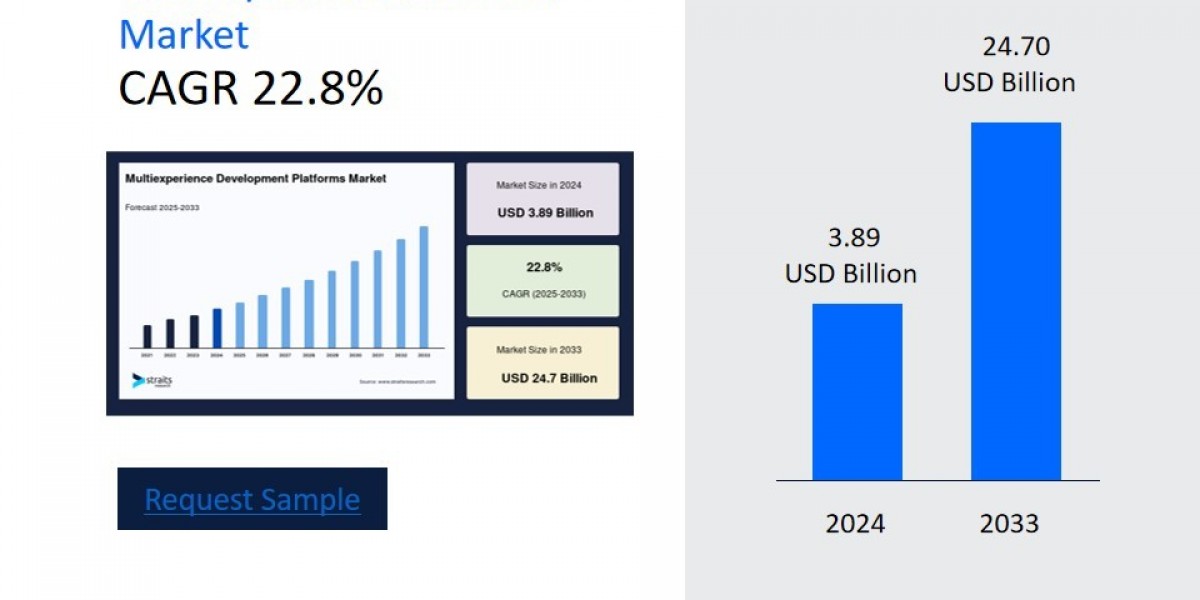A quiet but profound revolution is underway in how businesses create software. The focus has shifted from building single, isolated applications to crafting seamless, continuous journeys that flow across a multitude of digital touchpoints. This shift is being powered by Multiexperience Development Platforms (MXDPs), an emerging class of technology that is rapidly becoming the backbone of modern digital strategy. These platforms empower organizations to design, develop, and manage a cohesive web, mobile, wearable, chat, and augmented reality experiences from a single, unified foundation. As the demand for fluid and intuitive user interactions intensifies, MXDPs are moving from a niche advantage to a central component of competitive differentiation.
According to Straits Research, the global multiexperience development platforms market size was valued at USD 3.89 billion in 2024 and is expected to grow from USD 4.78 billion in 2025 to reach USD 24.70 billion by 2033, growing at a CAGR of 22.8% during the forecast period (2025-2033). This explosive growth trajectory underscores the critical need for the agility and efficiency these platforms provide in an increasingly multi-device world.
The Core Drivers: Why MXDPs are Gaining Momentum
The ascent of MXDPs is not happening in a vacuum. It is a direct response to several converging trends. The proliferation of smart devices—from phones and tablets to smartwatches and even smart glasses—has fragmented the user’s digital landscape. Customers now expect to start a task on one device and complete it effortlessly on another. Traditional development methods, which require building and maintaining separate codebases for each platform, are too slow, costly, and complex to keep pace.
MXDPs address this by promoting a "create once, deploy everywhere" philosophy. They provide low-code or pro-code environments with visual builders, pre-built components, and backend integrations that drastically reduce development time. This allows citizen developers and professional IT teams to collaborate effectively, accelerating digital transformation initiatives. Furthermore, the integration of Artificial Intelligence and Machine Learning directly into these platforms is a game-changer, enabling features like predictive analytics, intelligent process automation, and personalized user experiences straight out of the box.
Key Players and Strategic Moves: A Global Landscape
The competitive field for MXDPs is dynamic, featuring established tech giants and agile specialists, each vying for dominance with unique strategies.
Mendix (Netherlands): A Siemens business and a leader in the low-code space, Mendix has heavily invested in enhancing its multi-experience capabilities. Recent updates focus on immersive technologies, allowing developers to build augmented reality (AR) experiences for industrial metaverse applications. Their strategy is deeply tied to Siemens' industrial ecosystem, targeting sectors like manufacturing and logistics.
OutSystems (USA/Portugal): Known for its high-performance low-code platform, OutSystems continues to push the envelope with its multiexperience functionality. A key recent announcement involves deeper integration with generative AI to assist developers in writing code and generating UI layouts, significantly speeding up the development of complex, cross-channel applications.
Microsoft (USA): With its Power Platform, particularly Power Apps, Microsoft is a formidable contender. Its recent updates have been heavily focused on Copilot, an AI assistant that is now embedded across the platform. This allows users to build data-driven applications for web and mobile using natural language commands, deeply leveraging the Azure cloud ecosystem and Microsoft 365 data.
Salesforce (USA): The customer relationship management leader is expanding its horizon with the Salesforce Platform. Its recent innovations are centered around the Hyperforce architecture and the Einstein AI engine, enabling companies to build unified customer service portals that span from a traditional website to an in-app chat experience, all while maintaining a single view of the customer.
Google (USA): While not a traditional MXDP player, Google's Firebase platform provides a robust backend-as-a-service (BaaS) that is crucial for multiexperience development. Recent enhancements to its cloud firestore database and ML Kit are making it easier for developers to build scalable, intelligent applications across Android, iOS, and the web.
Emerging Trends and Recent News
The MXDP space is evolving rapidly, with several key trends making headlines:
The AI-First Platform: The integration of generative AI is the single biggest trend of 2024-2025. Platforms are competing to offer the most intuitive AI-assisted development, from automated code generation to AI-powered testing and debugging, making development more accessible.
Composable Experiences: There is a growing emphasis on "composability," where applications are built from modular, reusable components. This allows businesses to assemble and reassemble digital experiences quickly to meet changing market demands, a concept strongly promoted by leaders like Mendix and OutSystems.
The Rise of the Industrial Metaverse: As seen with Mendix, MXDPs are becoming key tools for building digital twin simulations and AR interfaces for frontline workers. This trend is particularly strong in Europe and North America, where manufacturing and engineering firms are investing heavily in Industry 4.0 technologies.
Strategic Consolidation: The market is seeing increased merger and acquisition activity. Larger vendors are acquiring specialized AI and analytics startups to bolt-on new capabilities to their platforms, a trend expected to continue as the market matures.
The Road Ahead: Beyond Mere Applications
The future of multiexperience development is not just about apps; it's about creating intelligent, context-aware digital ecosystems. The next wave of innovation will focus on platforms that can seamlessly orchestrate experiences across not just screens, but also physical spaces through IoT integration and ambient computing. The goal is to make technology fade into the background, providing a fluid, intuitive, and proactive interaction that feels less like using software and more like a natural extension of human intent. As the line between the physical and digital worlds continues to blur, the organizations that master multiexperience development will be the ones defining the next decade of digital engagement.






